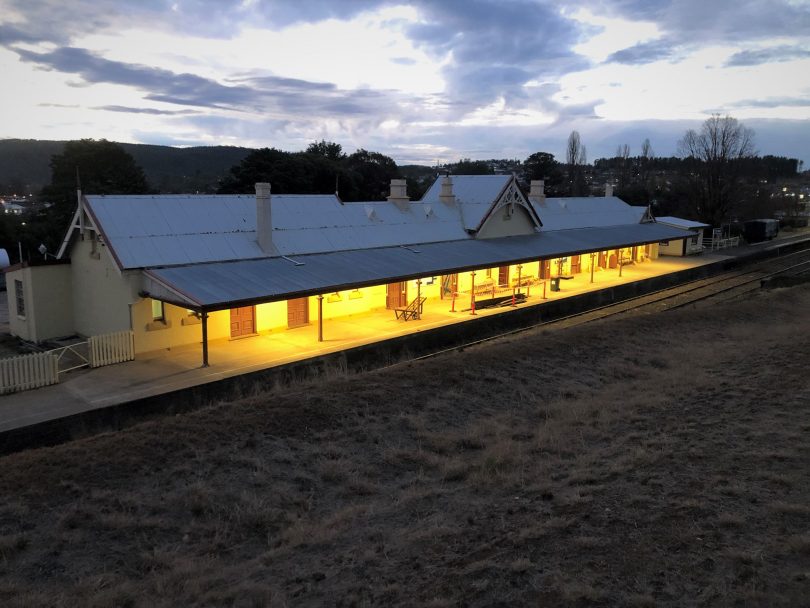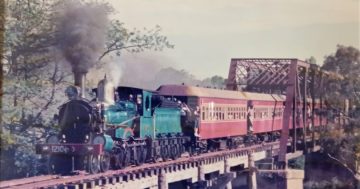
Cooma Monaro Railway Inc hopes any progress on a rail trail considers the potential of a railway line in use in the future. Photo: Cooma Monaro Railway Inc.
When the historic Monaro Rail Trail agreement was signed late last month, supporters of the bike trail rejoiced. However, it raised several questions regarding the future of the heritage railway line, particularly regarding whether the two projects could coexist with one another.
The Cooma Monaro Railway Inc (CMR) paused operations in 2014 to begin much-needed works on their safety management systems and rail infrastructure. Today, they aim to recommence heritage railway operations within the Snowy Monaro region and link the three towns of Cooma, Nimmitabel and Bombala to benefit the community and the region’s tourism industry.
Upon the announcement that Snowy Monaro Regional Council, Queanbeyan-Palerang Regional Council and the Monaro Rail Trail Inc had committed to the rail trail project, CMR declared that they’re fully supportive of the rail trail and that they believe both projects can coexist.
“As a Heritage Railway that has been a part of the Monaro region for over 30 years, we have always worked hard to support the economic development of the local community by promoting tourism in the region and attracting visitors from across the state,” said President of Cooma Monaro Railway Inc Gordon Strachan.
“We believe the development of a bike trail through the rail corridor, installed beside the existing track alignment and designed in conjunction with the railway, will give the Monaro a one-of-a-kind attraction that will not only enhance the reputation of the Monaro Region as a year-round tourist destination but also provide the catalyst for the economic recovery of our regional towns along the corridor.”
Explaining the opportunity for both groups, Mr Strachan believes that the two ventures can not only coexist but complement and add to one another.
“If cyclists don’t want to ride the whole link, but they want to ride to a vantage point or viewing point, we can actually transport them there, and they’d be able to ride back or vice versa,” he said.
“We’re also looking at providing dining experiences and other alternative rail experiences, and not everybody rides. We’re trying to cater for a larger market rather than just concentrating on one.”
Mr Strachan says the group is achieving great progress and attracting people from far and wide to help get the heritage rail operation off the ground.
The group proposes installing a new platform at Lake Williams, additional new platforms at key trail locations, a new platform and viewing facilities on Mount Cooper, and communication facilities across crucial points of the corridor.
President of Monaro Rail Trail Inc Ken Lister said that the group has already met with representatives from CMR to identify areas where there can be joint use of the corridor. The Monaro Rail Trail believes both the rail trail and railway line can coexist in certain sections.
“For example, if there’s a section where the Cooma Monaro Rail extended from Cooma down to Rock Flat, that’d be a great joint experience for people to be able to go out and take their bikes on the train and cycle back from Rock Flat into Cooma because there are no major bridges or cuttings in those areas,” said Mr Lister.
“Where the difficulty might arise in other sections is when there are big cuttings or big bridges.”
A spokesperson for Snowy Monaro Regional Council admitted that despite both groups eagerness to coexist, it may not be possible.
“The enthusiasm for new tourism ideas in light of the region’s recovery post bushfires and COVID-19 is fantastic,” the spokesperson said.
“We support people investigating options and will be interested to see the results of their studies.
“In most areas with successful rail trails, the trail is the standalone tourism product as the cycling trail is on the former rail line. The conversion of discussed railway corridors into rail trails is for shared use by walkers and cyclists. The width of the rail corridor is a big factor in assessing if co-existence is even a possibility.”
Updates to the Cooma Monaro Railway project are available on their Facebook page.
Original Article published by Max O’Driscoll on Riotact.









